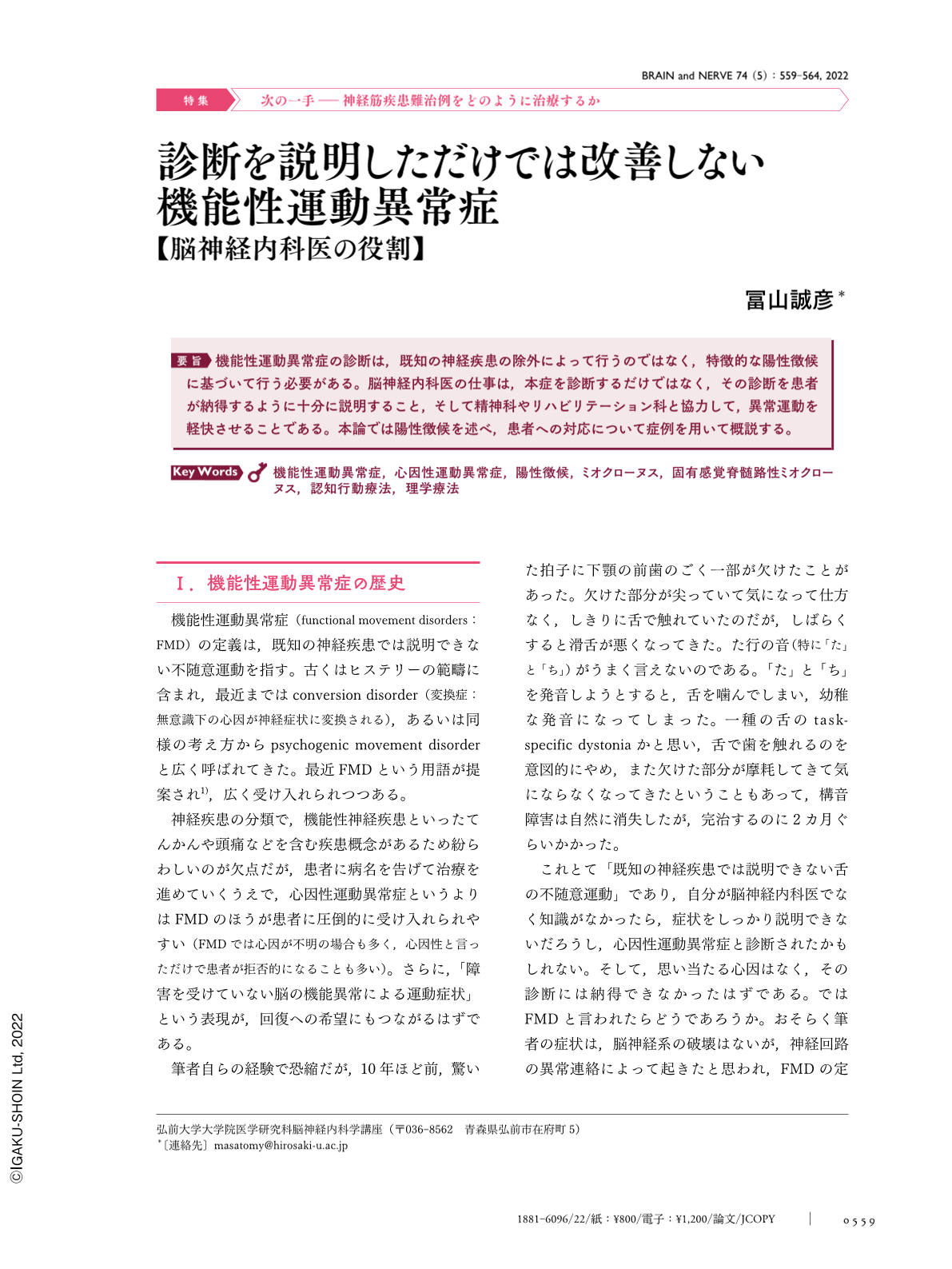Japanese
English
- 有料閲覧
- Abstract 文献概要
- 1ページ目 Look Inside
- 参考文献 Reference
機能性運動異常症の診断は,既知の神経疾患の除外によって行うのではなく,特徴的な陽性徴候に基づいて行う必要がある。脳神経内科医の仕事は,本症を診断するだけではなく,その診断を患者が納得するように十分に説明すること,そして精神科やリハビリテーション科と協力して,異常運動を軽快させることである。本論では陽性徴候を述べ,患者への対応について症例を用いて概説する。
Abstract
In recent years, the term “functional” is starting to replace “psychogenic” when referring to a specific group of movement disorders, with an increasing emphasis being placed on the role of neurologists in the management of these disorders. These conditions are common and disabling, and sometimes difficult to diagnose. History taking and physical examination may highlight positive signs suggestive of diagnosis, which should not be based on exclusion. During examination, the distraction sign may be observed. When functional myoclonus is present, the patient's movements may vary over time. The role of a neurologist is not only to diagnose functional movement disorders, but also explain to the patient that the patient has a distinct neurological disorder and provide clinical evidence that supports the diagnosis. It is useful to share the positive signs with patients when explaining the diagnosis. In this article, I describe a patient with functional abdominal jerks to demonstrate how a diagnosis is made and how one can explain the diagnosis to the patient. Once a patient accepts and understands the diagnosis, treatment can be initiated. Collaboration with psychiatrists and physiotherapists is essential. It has been shown that cognitive behavioral therapy and physiotherapy are beneficial in ameliorating functional movements.

Copyright © 2022, Igaku-Shoin Ltd. All rights reserved.


